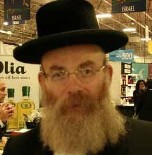 By Rabbi Gershon Tannenbaum
By Rabbi Gershon Tannenbaum
With the Governor and the New York State Legislature eyeing cutting costs of every item on its budget, the observant community must speak up and advise that the Kosher Law Enforcement Division that it must not only be retained at its full force, but should be strengthened. The name New York is almost synonymous with the word kosher. As of 2006, New York State had 1,618,320 Jewish residents, representing 8.4 percent of its population.
Across the United States, eight percent, Jews and non-Jews combined, eat kosher regularly. Needless to say, in New York State, the percentage of kosher consumers is considerably higher. Further, New York is manufacturing an inordinately large percentage of the kosher foods being consumed throughout the United States.
The continued growth of New York’s huge kosher food industry is at stake. Maintaining and strengthening New York State’s Kosher Law Enforcement’s vigilance enhances the kosher integrity of the State as well of its food manufacturers. We must let our State political representatives know how important this issue is to the Jewish community, as well as to the welfare of the state. The greater the number of kosher inspectors, the more attractive our products become to kosher consumers, Jews and non-Jews alike, throughout the United States. This translates into increased sales as well as more jobs, critically needed during this time of economic recession.
Historical Highlights of Kosher Food in New York
The first day in the history of kosher food in America was Monday, September 7, 1654, when 23 Jews disembarked onto New Amsterdam (today’s New York City). Though New Amsterdam’s governor, Peter Stuyvesant (1612-1672), wished to expel them, the Dutch West India Company, financial sponsor of settlement in the new world, ordered that they be permitted to remain. Thus, the Jewish community in New Amsterdam was established and represented the establishment of today’s Congregation Shearith Israel, the first and oldest congregation in what is today the United States. The congregation is also known as the Spanish and Portuguese Synagogue of New York City.
From 1654 until the mass arrival of German Jews beginning in 1820, the manufacture of kosher foods was under the direction of local congregations. In the 1700s, we find that kosher beef, with written congregational certifications, was being exported from New York to as far away as to Jamaica, Curacao, and Montreal. We learn from historical archives that commercial production of kosher foods was advanced in 1883, when the Horowitz Matzah Company began its bakery operations in New York.
In 1888, Rabbi Jacob Joseph, zt”l (1840-1902), arrived from Vilna and began his tenure as the first and only Chief Rabbi of New York. In that capacity, he battled mightily to establish and enforce kosher codes.
In that same year, the Breakstone brothers successfully sold butter, their first product, under the name of Breakstone Brothers, at 29 Jay Street in Brooklyn. 1905 was another year of increasing kosher food production and marketing in New York: Hebrew National Foods in New York began producing (not glatt) kosher frankfurters. Hebrew National expanded and marketed salamis, sauerkraut, mustard, and many other popular kosher products nationwide.
That same year, 1905, Ratner’s, the renowned New York dairy restaurant opened on the Lower East Side of Manhattan. They served sumptuous homemade soups, gefilte fish, whitefish, blintzes, knishes, and other favorite kosher dairy dishes for New York’s already large, and still growing, Jewish population.
Seeking to serve its robust and growing Jewish population, then numbering in the millions, the State of New York formulated the very first kosher food law in all of America in 1915. Specifically, the law prohibited offering non-kosher food as kosher. Appropriate penalties would be imposed on violators. In addition, retail establishments selling kosher and non-kosher foods had to prominently post signs so informing its clientele. The first challenge to the new law came in 1918 and the New York State Supreme Court upheld it as constitutional.

Streit’s Matzah Bakery began its operations in New York City in 1916, later expanding its manufacturing to more than 130 different kosher products. Another New York kosher food milestone took place in 1928 when Isadore Pinckowitz began the wholesale manufacturing of kosher sausages and hot dogs in great quantities that were sold to Waldbaum’s, then the largest supermarket chain catering to Jewish households.
The Union of Orthodox Jewish Congregation of America was founded in 1898 in Manhattan. Today known as the Orthodox Union (OU), it continues to be in Manhattan, from where they are of service to all of American Jewry. In 1924, they began their rabbinic supervision of kosher foods. Today, the OU continues as the largest kosher certification agency in the world.
A number of wine start-ups in New York City met with great success. Sam Schapiro founded Shapiro’s House of Kosher Wine 1899, which thrived for almost all of the last century. Shapiro’s had huge casks built in caverns underneath streets that teemed with tenement houses on the Lower East Side. Their wines carried the motto: “Wines You Can Cut With a Knife.” The winery moved to Monticello, Upstate New York, in 2002.
In 1934, after the Repeal of the Alcohol Prohibition (1920-1933), Monarch Wines was founded in Brooklyn and produced sacramental wines for use in religious ceremonies. During the years of Prohibition, only a small amount of wine was permitted for religious use. Monarch later leased its name to Manischewitz Wines as it grew to be the largest U.S. producer specializing in the manufacture and marketing of fruit wines, which included blackberry, cherry, elderberry and loganberry.
In 1945, Eugene Herzog, a Holocaust survivor arrived in New York. His Czechoslovakian family had earned a regal reputation for its production of ambrosial kosher wines beginning in 1848 until the Holocaust. The legend on his wine bottles was: “Herzog’s wine, fifth generation in the family business, rebuilt in America as Royal Kedem Wine Corporation.”
Heinz’s widely popular vegetarian beans were certified kosher by the OU in 1935 and the Organized Kashrut Laboratories (OK) was established that same year. OK quickly became one of the largest kosher certification agencies. In 1938, Empire Kosher Poultry was formed in the Catskills and in 1940, the first Barton’s Candy Store selling kosher chocolates in New York City opened. Fifty more Barton’s shops opened within its first 10 years.
Today’s Lender’s Bagels started in 1927 as the New York Bagel Bakery. In 1965, Hebrew National launched its effective “We Answer to a Higher Authority.” The slogan identified Hebrew National’s products as being of superior quality to the general public. However, Hebrew National has had a number of battles regarding the standards of it kashrus through the years. This did not detract from the impact of its famous slogan.
Levy’s rye bread introduced its “You Don’t Have to Be Jewish to Like Levy’s” with a smiling Native American Indian chief wearing the traditional Indian headdress enjoying Jewish bread. These were the first successful mass marketing efforts of traditional Jewish foods. The breakthrough advertising campaigns gave “kosher” special meaning to the general public. Thereafter, kosher foods have been accepted, automatically, as better and unadulterated.

In addition to kosher food certifications, kosher consumers relied on government agencies to protect them from kosher misrepresentations. In 1972, the First Establishment (establishment of an official state religion or of one religion above another) Clause challenge to a kosher food law immediately motivated additional efforts to achieve kosher food ordinances in Florida. By then, many states had enacted kosher consumer protection laws modeled on New York State’s extensive kosher statutes.
In 1987, the very first International Kosher Food and Jewish Life Expo was held at the Jacob K. Javits Convention Center in New York City. More than 50,000 people enthusiastically attended, while an additional 50,000 others could not get in. In 1990, then-Congressman Stephen J. Solarz (D-NY) introduced the first Federal Kosher Consumer bill in the U.S. House of Representatives.
Kosher foods became a huge segment of the food industry. In 1993, ConAgra, one the largest food production and marketing world conglomerate, acquired Hebrew National Foods. Sara Lee, another food giant, acquired Bessin Corporation (Best Kosher Sausage). That year’s statistics revealed the dramatic growth of kosher foods: Ethnic kosher food sales totaled more than $2 billion. Only 1.75 million of the six million American customers for kosher foods were Jewish. The rest were Muslims, Seventh-Day Adventists and others who accepted certified kosher foods as healthier or meeting their own religious requirements. Coca-Cola, Coors, General Mills, Hershey, Kraft, Nestlé’s, and many other mainstream food companies obtained kosher certification.
Menachem Lubinsky – Kosher Marketing
The contemporary kosher food market is best seen through the eyes of Menachem Lubinsky who has served in the Jewish community in many different capacities. Though not officially appointed by President Barack Obama, he is nevertheless the universally recognized czar of kosher food production and marketing. He is president & CEO of Lubicom Marketing Consulting, full-service public relations, advertising, marketing, and special events management firm.
Menachem Lubinsky is the organizer of the yearly Kosherfest events, as well as the editor-in-chief of the Kosher Today publication. His perspectives and forecasts are important and worth considering, as he has extensive experience in the field of kosher food production and marketing. Much of the information cited here was compiled and published by Menachem Lubinsky.

In 1996, Menachem Lubinsky announced statistics of the kosher food industry: Number of kosher consumers included two million Jews and five million non-Jews; dollar amount of kosher certified products totaled more than $35 billion; 325 Kosher companies displayed their products at the national fancy food show; an industry projection of more than nine million regular kosher consumers by the year 2000; and more than 36 million potential kosher consumers by 2020.
In 1997: Nabisco, another food giant, acquired kosher certification from the OU for 82 of its most popular products, including its legendary Oreo cookie. The OU, the largest supervision agency, celebrated its 100th Anniversary. KOSHERFEST ’97, the international kosher food and food service trade show, was the most successful ever.
In 1999, for the sixth consecutive year, the kosher food industry experienced more than 15 percent growth yearly, achieving more than $4 billion in sales. Manischewitz CEO Richard Bernstein, who had acquired the company for $124 million the previous year, outlined the company’s plans to target mainstream consumers and forecast his company’s 40 percent growth.
Lou G. Segal’s, one of America’s oldest kosher restaurants, sold its commissary to Weiss Kosher Cuisine. Segal was the first kosher airline caterer. StarKist revamped its marketing to target the kosher and pareve market.

Wal-Mart entered the kosher market, opening a store in New York’s Catskill Mountains. Miller’s Beer obtains OK certification. Kosher shopping on the Internet increased. Kashrus Magazine, published by Rabbi Yosef Wikler of Brooklyn, reports 366 kosher certifications in 1997 on food products in the U.S. (Today, that number is 1,033.)
New York’s Share of the Kosher Market
For the year 2010, Menachem Lubinsky projects: More than 14 million regular kosher consumers; more than 45 million potential consumers of kosher products; more than $40 billion being spent on all kosher certified products; and more than 150,000 packaged goods items to be certified kosher.
New York’s immense share of the kosher industry is bolstered by its effective and respected Kosher Law Enforcement Department. That division must be increased and expanded so that New York continues to capture growing percentages of the nation’s kosher food business. This message must be transmitted to every member of New York’s legislature.
{The Jewish Press/Matzav.com Newscenter}











